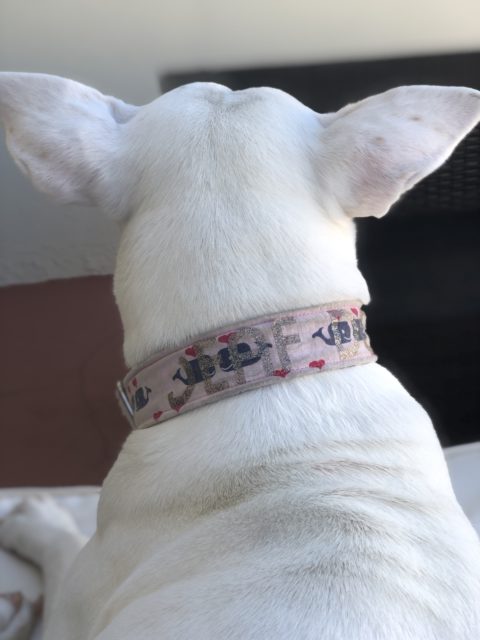My Deaf Dog Looks Away and Doesn’t “Listen”
 Does your deaf dog look away, look at you out of the corner of his eye, turn his head in the other direction, or move so he can’t see you when you are giving him a cue?
Does your deaf dog look away, look at you out of the corner of his eye, turn his head in the other direction, or move so he can’t see you when you are giving him a cue?
Often people say that their deaf dog demonstrates these behaviors when he “doesn’t want to listen.” However in reality, the above described behaviors are known as “appeasement” signals. This is your deaf dog telling you that he is anxious or uncomfortable—probably due to feeling confused or conflicted.
Training equals education and communication and the basis is motivation and communication. Therefore, if your deaf dog appears not to “listen” either the motivation to perform the behavior you have cued isn’t there, he doesn’t understand the cue, or it’s a combination of both scenarios.
Too, when training you want to keep in mind the three “Ds”: distance, duration, and distraction. For example your dog may be able to respond to the cue for “sit” at home, however might look away when you cue this behavior at the veterinarian’s office. This could be because while your dog understands the cue for sit he has not sufficiently practiced it with this level of distraction or difficulty as yet. 
PRO TIPS: To “proof” your cues and encourage more appropriate responses keep the following in mind:
-
-
- Practice, practice, practice your cues in a low distraction environment, close to your deaf dog first.
- When teaching new cues remember to “label” using your visual (or tactile cues) them as they are happening so that your deaf can make the association between the behavior and the cue.
- Be sure that you have a consistent marker system so that you can communicate effectively with your dog when he’s done something that you would like to see more of!
- Carry high value reinforcers with you so that after you mark the sought after behavior you can reinforce it—so that it is more likely to be repeated in the future.
- When building new behaviors be certain to mark and reinforce every correct response to the cue.
- If your dog does not respond appropriately, take steps backwards to make it easier for your deaf dog to be successful!
-
Need more help! Contact PAW today!
